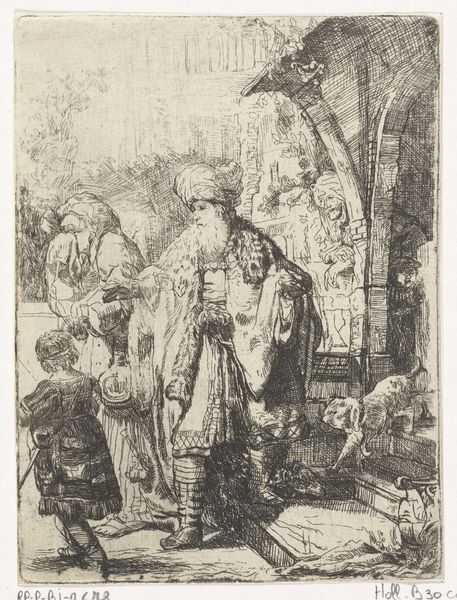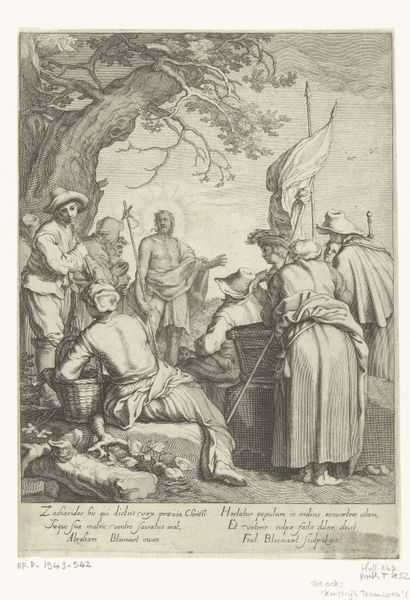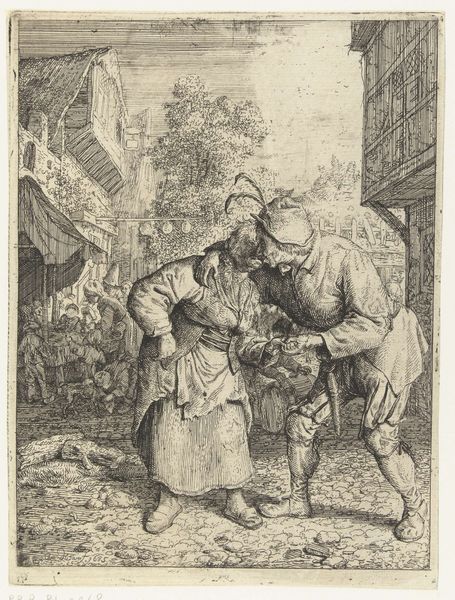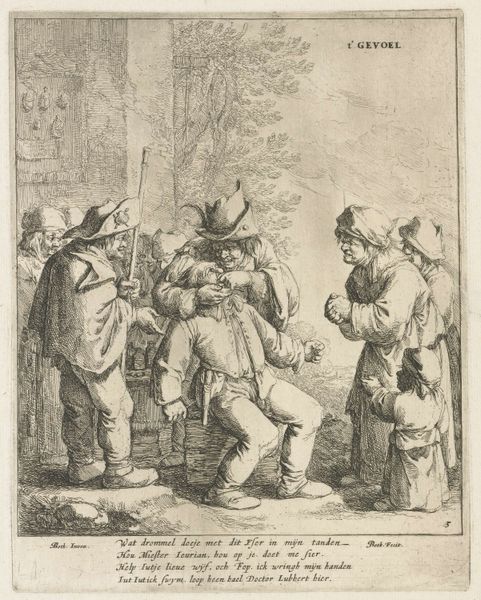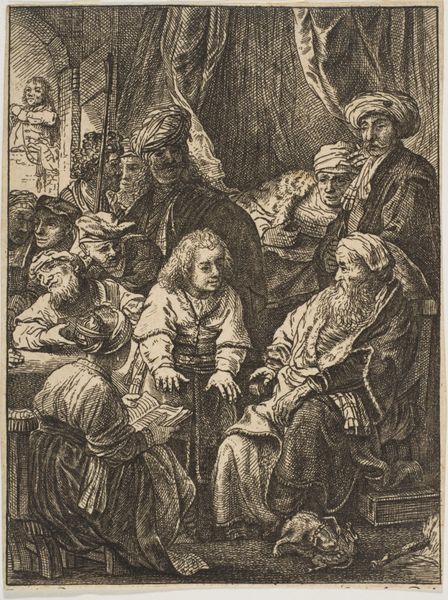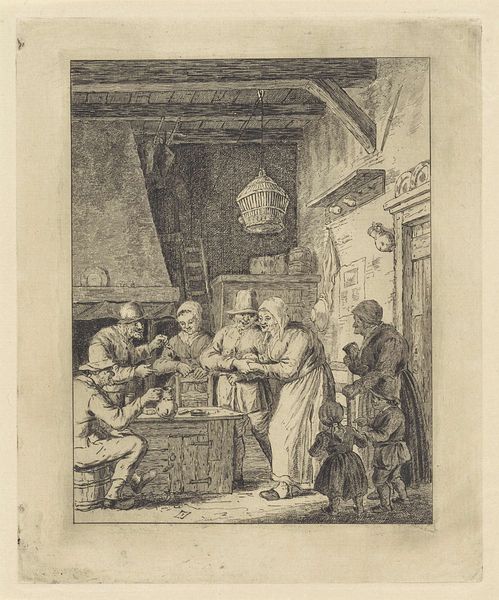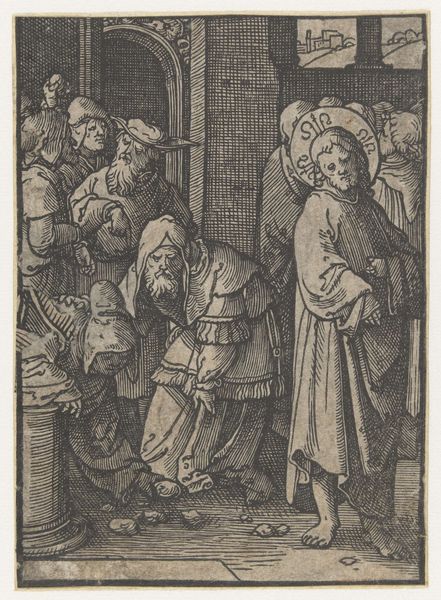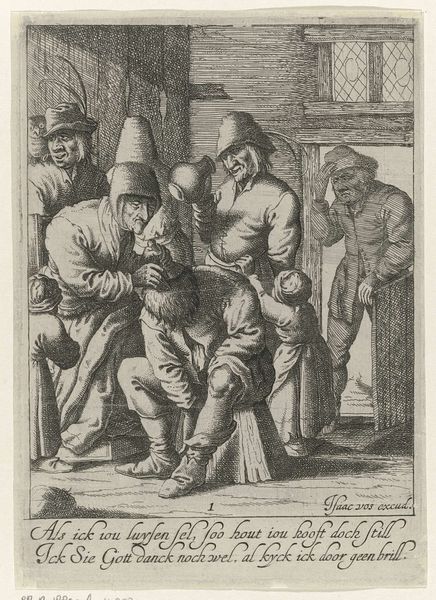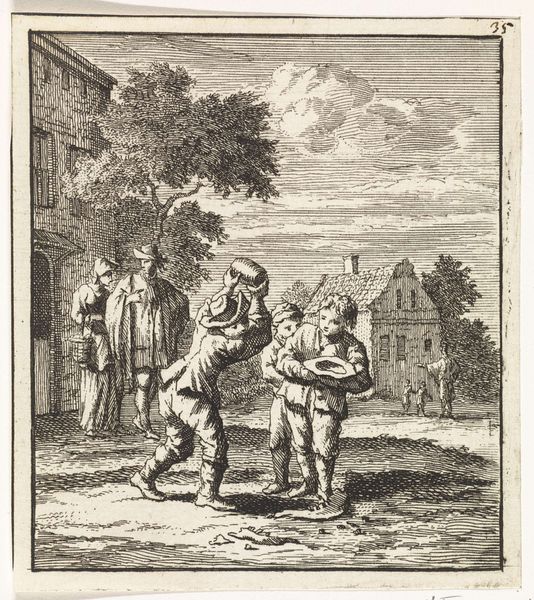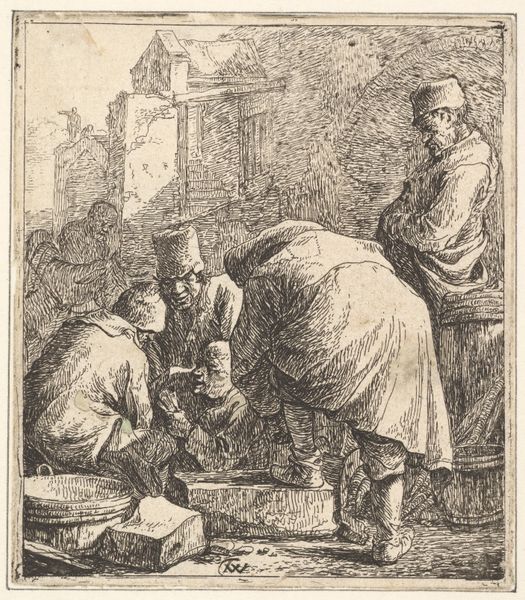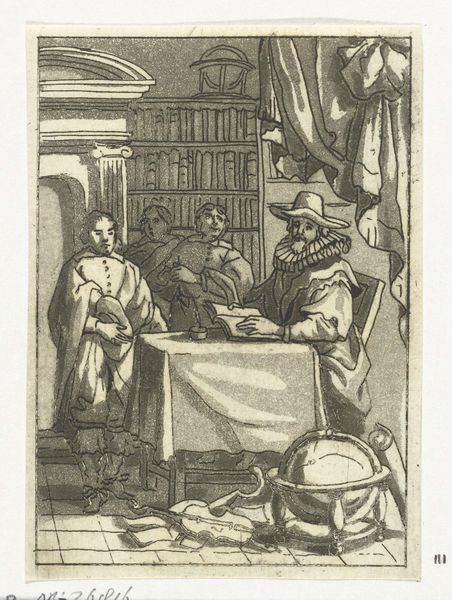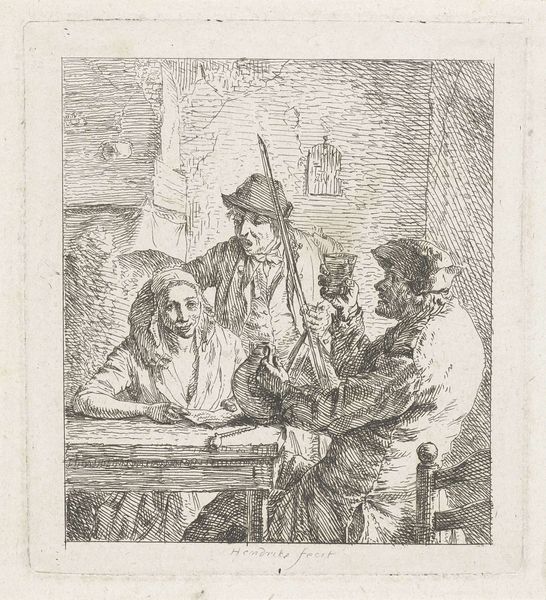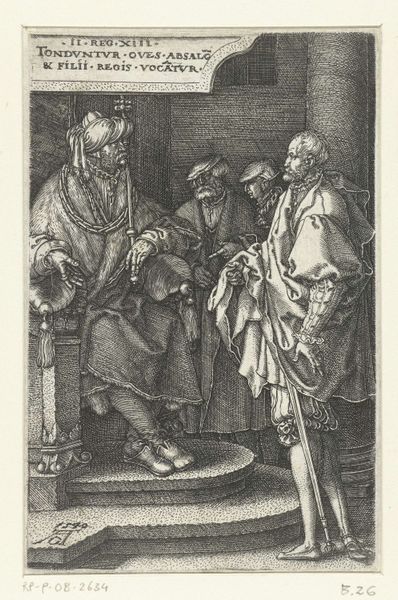
etching
#
portrait
#
narrative-art
#
baroque
#
dutch-golden-age
#
etching
#
figuration
#
genre-painting
Dimensions: height 164 mm, width 125 mm
Copyright: Rijks Museum: Open Domain
Cornelis Dusart created the etching, "The Deceived Husband," around the turn of the 18th century in the Netherlands. Here, Dusart captures a narrative scene rife with cultural commentary on gender roles and social expectations. In the foreground, we see a woman being led by two men, one seemingly a fool or jester based on his hat. The body language suggests a story of deceit or trickery. During this period, Dutch art often depicted scenes of everyday life, offering moral lessons or social satire. The artwork touches on themes of marital fidelity, trust, and the roles men and women played in Dutch society. The woman's apparent distress, combined with the men's guiding actions, might reflect the limited agency women had and the potential for exploitation within social structures. "The Deceived Husband" is not just a snapshot of a moment, it is a reflection on the nuanced power dynamics that shape personal relationships and societal norms.
Comments
No comments
Be the first to comment and join the conversation on the ultimate creative platform.
